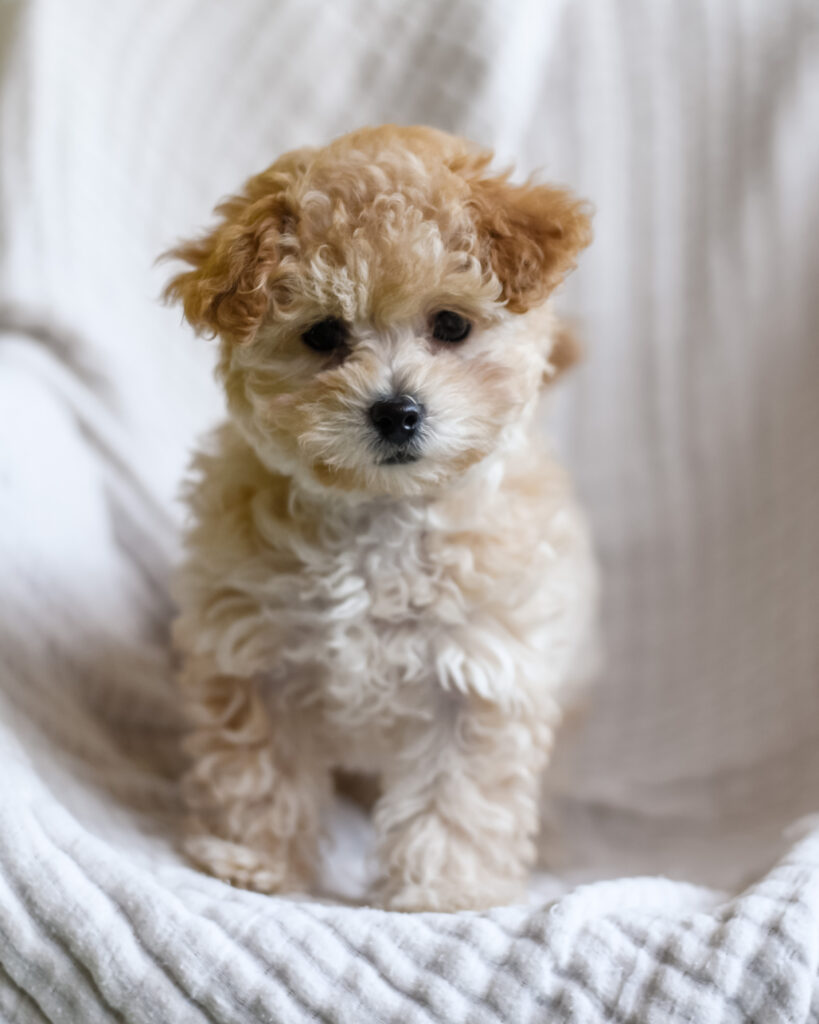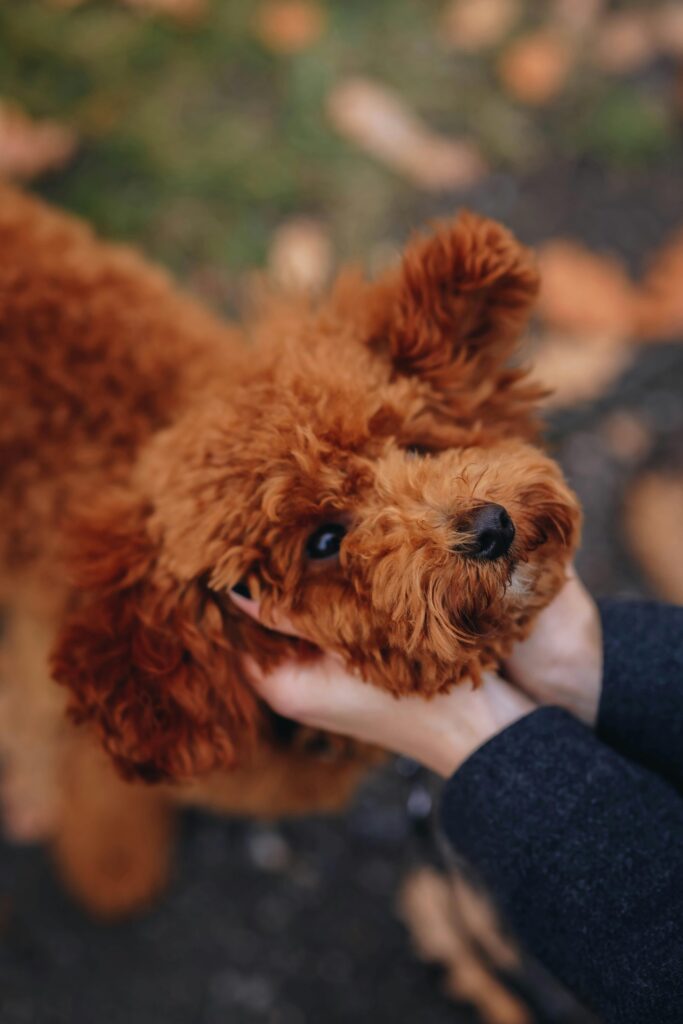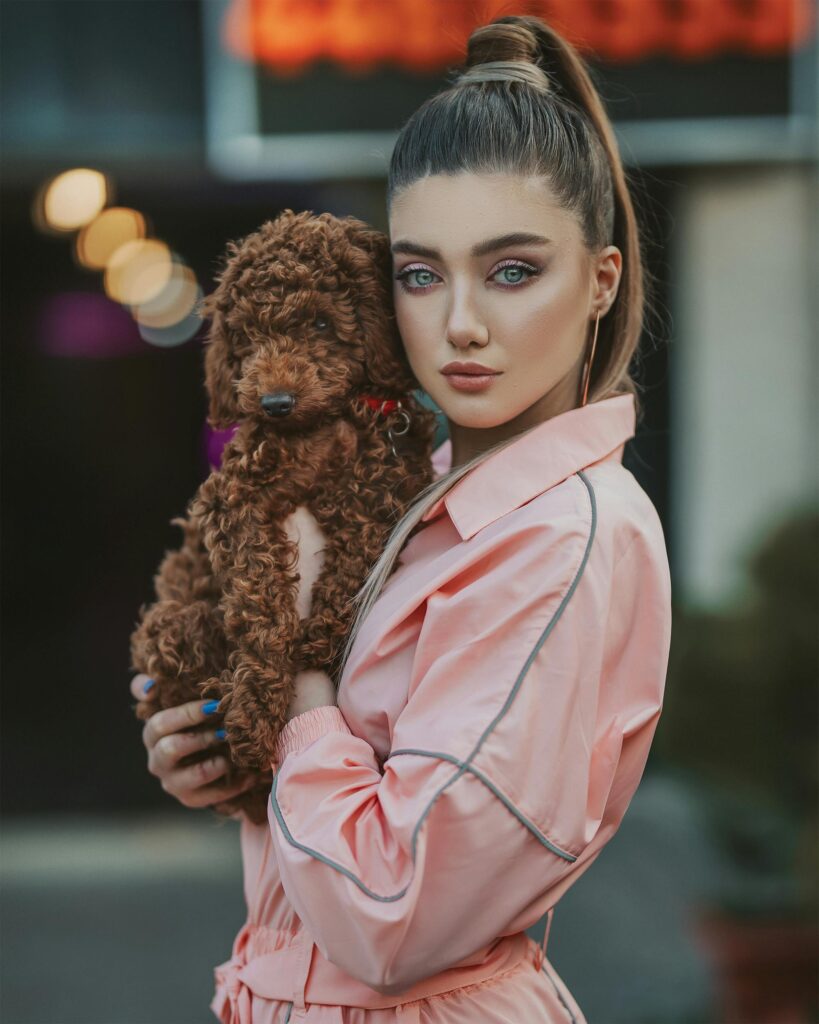Meet Our Available Puppies
Find the perfect ‘tail’ for your story!
The Puppy You've
Been Waiting For.
Product Title Here
Put a bird on it tumblr trust fund sustainable williamsburg green juice.
Product Title Here
Put a bird on it tumblr trust fund sustainable williamsburg green juice.
Product Title Here
Put a bird on it tumblr trust fund sustainable williamsburg green juice.
Product Title Here
Put a bird on it tumblr trust fund sustainable williamsburg green juice.
Product Title Here
Put a bird on it tumblr trust fund sustainable williamsburg green juice.
Product Title Here
Put a bird on it tumblr trust fund sustainable williamsburg green juice.
January 24, 2025

Are you wondering how to train a cavapoo puppy? Welcoming a Cavapoo puppy into your home is an exciting experience filled with joy, curiosity, and a whole new level of responsibility. Cavapoos are a popular hybrid breed, known for their affectionate nature, intelligence, and adaptability. While they make excellent family companions, their success as a well-behaved adult dog depends largely on the training they receive as puppies. In this guide, we’ll explore how to train a Cavapoo puppy, focusing on essential training techniques, the importance of early socialization, and how ethical breeding influences a dog’s temperament and health.
Why Training a Cavapoo Puppy Is Crucial
When you are learning how to train a cavapoo puppy, cavapoos are incredibly smart and eager to please, making them relatively easy to train compared to other breeds. However, like any dog, they need consistent guidance and structure. Training not only ensures that your puppy develops good habits but also helps foster a strong bond between you and your furry companion. The earlier you begin training your Cavapoo, the better your results will be.
The Role of Socialization in Cavapoo Training
Socialization is one of the most critical aspects of raising a well-adjusted and balanced Cavapoo. Socialization refers to the process of exposing your puppy to a variety of people, pets, and environments to help them become comfortable in different situations. Early socialization reduces the likelihood of behavioral issues such as fearfulness, anxiety, or aggression later in life.
At Storytail Dogs, we put an immense amount of effort into early socialization and desensitization. By introducing puppies to new sounds, environments, and people from a young age, we ensure that they grow up to be confident, adaptable adults. Our puppies are exposed to various stimuli, such as household noises, car rides, and interactions with other dogs and people. This exposure helps them navigate new situations with ease and builds their resilience, a crucial trait for a therapy or emotional support animal.

Early Neurological Stimulation (ENS) and Early Scent Introduction (ESI)
Early Neurological Stimulation (ENS) and Early Scent Introduction (ESI) are integral parts of our training protocol at Storytail Dogs. These techniques contribute to the development of a strong, stable nervous system and a well-rounded temperament.
Early Neurological Stimulation (ENS): ENS is a series of exercises designed to stimulate a puppy’s neurological system during the first few weeks of life. The goal is to enhance the puppy’s ability to handle stress and develop resilience. ENS includes activities like holding the puppy in different positions, briefly exposing them to mild stressors (such as temperature changes), and gently touching different parts of their body. These exercises help puppies build tolerance to new experiences, making them more adaptable as they grow.
Early Scent Introduction (ESI): ESI is another method we use to enrich the sensory experiences of our puppies. This technique involves exposing the puppies to a variety of scents, which helps stimulate their olfactory senses. The ability to distinguish and process scents is important for emotional support and therapy animals, as it supports their ability to respond to different environments and situations.
Both ENS and ESI contribute to the Cavapoo’s emotional resilience and ability to cope with the demands of therapy work. These early interventions, combined with socialization, set the foundation for a confident, well-adjusted puppy.
Training Techniques for Your Cavapoo Puppy
Training a Cavapoo puppy can be a rewarding experience when you use the right techniques. Here are some fundamental training methods to get you started:
1. Positive Reinforcement
How to train a cavapoo pupy with positive reinforcement is one of the most effective training methods for puppies, and it works particularly well with Cavapoos. Cavapoos are known for their intelligence and eagerness to please, making them highly receptive to this approach. Positive reinforcement involves rewarding your puppy immediately after they display the desired behavior, reinforcing that action and encouraging them to repeat it in the future. This method not only teaches your puppy good behavior but also strengthens your bond with them.
When using positive reinforcement, rewards can come in many forms—treats, praise, toys, or even a quick belly rub. The key is to choose a reward that motivates your puppy. For example, when your Cavapoo follows a command like “sit,” immediately offer them a treat along with enthusiastic verbal praise, such as “Good job!” This immediate reward creates a clear connection between the behavior and the positive outcome, which motivates your puppy to continue following commands.
Timing is crucial when using positive reinforcement. If you delay the reward, your puppy might not associate it with the action they just performed. This can confuse them, making training less effective. Therefore, always reward your puppy right away—this helps them make the connection between the command and the reward.
You can also use toys as a reward, especially if your Cavapoo loves to play. For instance, if your puppy successfully performs a trick like “shake,” reward them with a game of fetch or tug-of-war. By varying the rewards, you keep the training process exciting and engaging for your puppy, which helps maintain their interest and motivation.
Over time, your Cavapoo will start to associate following commands with positive experiences. This makes them more likely to obey in the future. Once your puppy consistently responds to commands like “sit,” “stay,” or “come,” you can begin to phase out the treats and rely more on praise and toys. However, always be sure to offer a reward occasionally to maintain their motivation.
At Storytail Dogs, we emphasize the importance of positive reinforcement in our early training practices. By incorporating this method from an early age, we help puppies develop good habits and a strong desire to please their owners. When you bring your Storytail Cavapoo into your home, they will already be accustomed to this training method, making it easier for you to continue teaching them new commands and behaviors.
Remember, patience is key when using positive reinforcement. Puppies, especially young ones, have short attention spans and may need repetition to learn new behaviors. With consistency and encouragement, your Cavapoo will not only learn basic commands but will also grow into a well-behaved, confident companion.

2. Crate Training
How to train a Cavapoo puppy crate training is an essential part of housebreaking and helping your Cavapoo puppy feel safe and secure in their environment. A crate is more than just a tool for training; it serves as a comforting space for your puppy to relax, sleep, and retreat when they need some quiet time. When introduced properly, crates become a positive and reassuring place that your puppy can associate with safety and rest. Crate training also plays a significant role in potty training, helping your puppy develop good habits and maintain a clean living area.
At Storytail Dogs, we approach how to train a cavapoo puppy crate training differently than many breeders. From an early age, we introduce crates without doors into the puppies’ living spaces. This allows the puppies to explore the crates freely, going in and out as they please. By doing this, we prevent any negative associations with the crate and help puppies see it as a place of comfort and security, rather than a confinement. These positive experiences early on set the stage for a smooth transition into crate training when they reach your home.
Once your puppy is comfortable with the crate and views it as a safe sleeping area, we begin increasing their time spent inside. At Storytail Dogs, we gradually introduce crating time by having the puppies spend short periods alone in their crates while supervised. Over time, we increase the duration they spend inside the crate, which helps them adjust to being in the crate without anxiety. By the time they reach their new home, your Storytail puppy has already developed a healthy relationship with their crate.
Our approach to how to train a cavapoo puppy crate training provides your new puppy with a solid foundation. When they arrive at your home, they’ll already have the confidence to settle down in their crate, even overnight. This head start makes transitioning into their new environment much easier, reducing stress for both you and your puppy. With consistent reinforcement, your Cavapoo will soon feel right at home in their crate, making crate training a natural part of their daily routine.
As you continue crate training at home, remember to always pair crate time with positive experiences. Feed your puppy their meals in the crate, offer them treats for going inside willingly, and provide comforting bedding for them to rest on. With patience and consistency, your puppy will learn to view their crate as a safe, cozy space where they can relax and sleep.
3. Potty Training
Potty training is one of the most important steps in raising a well-behaved Cavapoo, and it requires patience, consistency, and a solid routine. Starting potty training early sets the foundation for your puppy to understand where and when it’s appropriate to go. Cavapoos, like other small breed dogs, have unique potty training needs due to their higher metabolism and smaller bladders. This means they need to go outside more frequently and may take a little longer to train compared to larger dogs.
The first step in how to train a cavapoo puppy potty training your Cavapoo is to establish a consistent schedule. Take your puppy outside to the same spot every time, so they can begin to associate that area with potty time. Puppies, especially small breeds like Cavapoos, usually need to go outside shortly after eating, drinking, or waking up from a nap. Pay attention to the signs your puppy gives you—sniffing around, circling, or whining are common indicators that they need to go.
When you take your Cavapoo outside, give them a specific command, such as “Go potty,” to help them understand what’s expected. Once they go potty outside, immediately reward them with a treat and enthusiastic praise. Positive reinforcement helps them learn that going outside is the desired behavior and makes them more likely to repeat it. Over time, your puppy will start to associate going outside with receiving a reward, which will speed up the training process.
Consistency is crucial when it comes to potty training. Take your puppy outside frequently, especially during the early stages of training. Small breed dogs like Cavapoos have small bladders and need to go outside more often than larger dogs. You may need to take them out every hour or two during the day. As they get older and their bladder capacity increases, you can start extending the time between potty breaks.
Accidents will happen, especially during the first few weeks of training. It’s important to stay patient and avoid punishing your puppy for accidents. Punishment can lead to confusion, fear, and even anxiety around potty training, which can make the process harder. Instead of focusing on the accident, redirect your puppy to the appropriate spot outside, and reward them when they go potty in the right place. If you catch your puppy in the act of having an accident indoors, gently guide them outside without scolding, and reward them once they finish.
One of the challenges of potty training small breeds is their smaller bladders. Cavapoos may not be able to hold their urine as long as larger dogs, so it’s important to be proactive and consistent in taking them outside. While it might take a little longer to train a small breed like a Cavapoo compared to a larger dog, the process is still very achievable with patience and routine.
At Storytail Dogs, we set the stage for successful potty training by exposing puppies to early socialization and basic housebreaking concepts. By the time they reach their new homes, they have started the process of learning where and when to go. With the consistency and guidance you provide at home, your Cavapoo will quickly understand the routine and become well-trained.
In addition to outdoor potty breaks, consider using a crate when you’re not able to supervise your puppy directly. Dogs naturally avoid soiling their sleeping area, so using a crate can help teach your puppy to hold it until they can go outside. When you do use a crate, be sure to take your puppy outside as soon as you let them out of the crate.
The key to success in how to train a cavapoo puppy potty training is consistency, positive reinforcement, and a little patience. With time, your Cavapoo will learn the proper potty habits, and the process will become much easier. By following these steps and being mindful of their unique needs as a small breed, you’ll help your Cavapoo grow into a well-trained, well-behaved companion.

4. Leash Training
Leash training is an essential skill for every puppy, especially for energetic breeds like the Cavapoo. It’s important for both safety and enjoyment. Leash training helps you maintain control over your puppy’s movements while out for walks and ensures that your Cavapoo can explore the world safely. Starting leash training early creates a positive association with the leash and makes outings enjoyable for both you and your puppy.
Begin leash training by introducing your Cavapoo to the leash indoors. At first, simply let them get used to the sensation of wearing the leash. Clip the leash onto their collar, and let them drag it around the house for short periods while supervised. This helps them become accustomed to the weight and feel of the leash without feeling restrained. Praise them and offer treats for wearing the leash to create positive associations.
Once your puppy is comfortable with the leash indoors, it’s time to move to short walks around the house or yard. Keep these initial walks short to avoid overwhelming your puppy. Let them explore their environment while learning to follow your lead. If they stop or pull in a certain direction, gently guide them along. At this stage, focus on keeping the walks relaxed and fun, allowing your Cavapoo to build confidence with each step.
As your puppy grows more comfortable with walking on the leash, gradually increase the length of your walks. If you venture outside, start with a quiet area like your backyard or a calm park. This gives your puppy the chance to explore without being distracted by too many new sights or sounds. As they gain confidence, you can start walking in busier areas where they’ll encounter more stimuli like other dogs, people, or traffic.
One of the most common challenges in how to train a cavapoo puppy leash training is leash pulling. Cavapoos, like many small breeds, have a lot of energy and curiosity, which can lead them to pull on the leash while walking. If your puppy pulls ahead of you, gently stop walking. Stand still, wait for them to calm down, and only start walking again when they’re walking calmly beside you. This teaches your puppy that pulling doesn’t get them where they want to go, but walking politely does.
Consistency is key when teaching your Cavapoo proper leash behavior. Over time, your puppy will learn to walk beside you instead of pulling ahead. Always reward good leash behavior with treats or praise. When your puppy walks nicely on the leash, give them a treat and let them know how proud you are of them. This positive reinforcement helps solidify the behavior and encourages your puppy to repeat it on future walks.
If your puppy continues to pull despite your best efforts, consider using a harness designed to discourage pulling. A no-pull harness can gently redirect your puppy’s attention back to you without causing discomfort. As with any training tool, make sure to pair it with positive reinforcement so your Cavapoo associates the harness with rewards and good behavior.
At Storytail Dogs, we help start the leash training process early by introducing puppies to the concept of walking on a leash and fostering positive experiences. By the time your puppy comes home, they will be familiar with the basics, and you can continue building on that foundation.
Leash training is not only about teaching your puppy how to behave but also about building trust between you and your dog. With patience and consistency, leash training will provide your Cavapoo with the skills they need to enjoy safe, enjoyable walks while also giving you control over their movements in different environments.

5. Basic Commands
Teaching your Cavapoo basic commands is essential for effective communication and control. Commands like “sit,” “stay,” “come,” and “down” are the foundation of training, helping you manage your puppy’s behavior while strengthening your bond. These commands also ensure your Cavapoo can respond to your cues in various situations, making them a well-behaved companion.
Start by using treats to lure your puppy into the desired position. For example, to teach the “sit” command, hold a treat above your puppy’s nose and slowly move it towards their tail. As they follow the treat, their bottom will naturally lower to the ground. As soon as they sit, immediately reward them with the treat and praise them with enthusiastic words like “Good sit!” This positive reinforcement helps your Cavapoo associate the action with the reward, making them more likely to repeat it.
For the “stay” command, start by asking your puppy to sit. Once they are in the sitting position, hold your hand up like a stop sign and say “stay” in a firm but calm voice. If your puppy stays in place for even a few seconds, reward them with a treat and praise. Gradually increase the duration before giving the reward. This helps teach your puppy patience and reinforces the idea that staying in one place results in a positive outcome.
To teach “come,” start in a quiet, familiar space. Call your puppy’s name in an excited tone, followed by the command “come.” When they approach you, reward them with praise and treats. This command is especially important for safety, so practice it often. Over time, you can increase the distance and practice in new environments, ensuring your puppy responds reliably to the “come” command in any situation.
The “down” command is another valuable skill for teaching your puppy control. Start by getting your puppy to sit, and then hold a treat in front of their nose. Slowly lower the treat toward the ground, and as their body follows the treat, say “down.” Once your puppy is lying down, reward them with praise and a treat. This command can help you get your puppy to settle down when needed.
Consistency is key when teaching how to train a cavapoo puppy basic commands. Practice each command in a quiet, distraction-free environment so your puppy can focus on learning. Once they have mastered the command in a calm setting, you can gradually introduce distractions, such as toys or people, to make the training more challenging. This helps your puppy learn to obey even when there are distractions present.
Short, frequent training sessions are much more effective than long, drawn-out sessions. Puppies, especially Cavapoos, have short attention spans, so keeping training sessions brief—around 5 to 10 minutes—will ensure your puppy stays engaged and focused. You can repeat these short sessions multiple times throughout the day to reinforce the commands and help your puppy retain what they’ve learned.
If your Cavapoo struggles with a particular command, don’t get discouraged. Be patient and go back to the basics. Use positive reinforcement to encourage progress and keep the training fun. Break down complex commands into smaller steps, and reward each part of the process. For example, if your puppy can sit but struggles to stay, reward them for staying still for a few seconds before gradually increasing the duration.
At Storytail Dogs, we start teaching our puppies basic commands early, focusing on positive reinforcement and consistent training. By the time your Cavapoo joins your family, they will already have a foundation of basic obedience, making it easier for you to continue their training at home.
Remember, training is a lifelong process, and with consistent practice and plenty of praise, your Cavapoo will soon master these basic commands. The effort you put into training will pay off in a well-behaved, responsive puppy who can enjoy a close, positive relationship with you.
Ethical Breeding and Its Impact on Temperament and Health
Ethical breeding plays a crucial role in shaping a puppy’s temperament and health. At Storytail Dogs, we prioritize the health and well-being of our puppies through responsible breeding practices. Our breeding program is designed to produce healthy puppies with excellent temperaments, and we carefully select breeding pairs based on their genetic health, temperament, and suitability for therapy and emotional support work.
Responsible breeders conduct health testing on both parents to screen for genetic disorders and ensure the puppies will have the best chance of growing into healthy, well-adjusted adults. In addition, ethical breeding practices include providing puppies with proper socialization, early training, and health care from birth.
Cavapoos are a cross between the Cavalier King Charles Spaniel and the Poodle, and the goal of our breeding program is to combine the best qualities of both breeds. Cavalier King Charles Spaniels are known for their gentle and affectionate nature, while Poodles are intelligent, hypoallergenic, and trainable. By carefully selecting our breeding pairs, we ensure that our Cavapoos inherit the best traits of both breeds.
You can see our available Storytail puppies here https://storytaildogs.com/puppies-available

The Role of Baxter and Bella in Training Your Cavapoo
One of the most valuable resources we recommend to new puppy owners is the Baxter & Bella online training program. Baxter & Bella offers a wealth of knowledge on how to train a cavapoo puppy, including a puppy training program that covers everything from housebreaking to basic obedience. Their step-by-step approach helps you train your Cavapoo in a way that builds a strong foundation of good behavior.
The program focuses on positive reinforcement and gentle training techniques that align with the methods we use at Storytail Dogs on how to train a cavapoo puppy. By incorporating Baxter & Bella’s training materials into your Cavapoo’s routine, you can reinforce the skills learned during their early socialization and training.
Conclusion
Training your Cavapoo puppy is a rewarding process that sets the stage for a well-behaved, confident adult dog. At Storytail Dogs, we go above and beyond to ensure that each puppy receives the best start in life through early socialization, ENS, ESI, and ethical breeding practices. With the right training techniques, positive reinforcement, and resources like Baxter & Bella, you can raise a Cavapoo that is not only well-behaved but also a happy and loving member of your family.
Remember, consistency and patience are key. By investing time and effort into your puppy’s training and socialization, you will have a loyal companion who is ready to thrive in any situation.
- PetMd-“Cavapoo”- https://www.petmd.com/dog/breeds/cavapoo
- American Kennel Club-“Training”- https://www.akc.org/expert-advice/training/
- VCA Animal Hospitals-“Puppy Behavior and Training – Training Basics”- https://vcahospitals.com/know-your-pet/puppy-behavior-and-training-training-basics
Leave a Reply Cancel reply
Storytail Dogs
A Dog For Your Story. Focused on READ dogs, therapy dogs, and resilient family companions.
@storytaildogs
© StorytailDogs 2024. All rights reserved. | Legal |